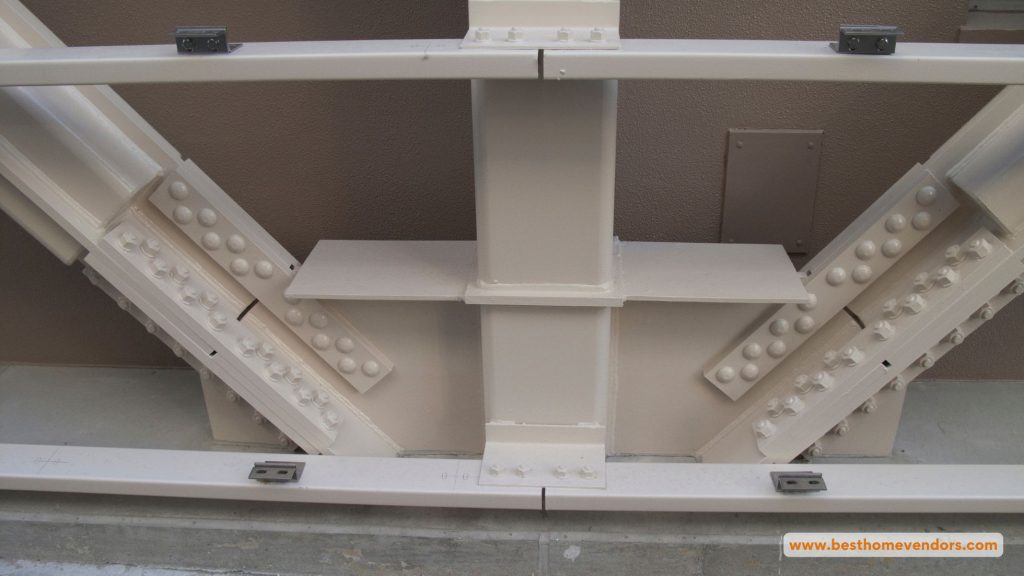
Earthquake Retrofitting: Securing Your Home Against Quakes

Did you know California faces a high chance of a big earthquake in the next 30 years? This fact highlights the need for earthquake safety and seismic retrofitting. Making your home earthquake-proof can save your property and protect your loved ones.
Older houses are more at risk during earthquakes. Using retrofit techniques can make them stronger. The 1989 Loma Prieta earthquake showed how important house bolting and quake resilience are. It caused 63 deaths and $6 billion in damage.
Spending $3,000 to $7,000 on retrofitting can save money later. It can make your home safe from earthquakes. This means lower insurance costs and less repair bills after an earthquake. Retrofitting can turn a dangerous home into a safe one, giving you peace of mind.
Understanding Earthquake Retrofitting
Homeowners in areas prone to earthquakes wonder how to protect their homes. The key is earthquake retrofitting, which includes upgrades to make your home stronger. These upgrades boost your home’s ability to withstand earthquakes and can save on repairs after an event.
Retrofitting means making your home’s foundation and structure stronger against earthquakes. For example, a “brace and bolt” retrofit costs between $3,000 and $5,000. More complex jobs can cost over $10,000. Methods like securing plywood to walls or anchoring the foundation help prevent your home from moving or collapsing.
Retooling your home also means securing tall furniture, installing gas shut-off valves, and bracing water heaters. These steps are key to being ready for an earthquake and can greatly reduce injury risks. Features like old masonry chimneys are often replaced with safer options to lower risks.
Older homes need retrofitting the most since they often lack earthquake safety features. Homes over 20 years old or those in risky locations are more likely to be damaged in an earthquake. Upgrading these homes can make them much stronger. The “Standard Plan A” in the San Francisco Bay Area offers guidelines for retrofitting.
While retrofit contractors don’t need special licenses, many get trained through FEMA courses. Retrofitting your home is cheaper than fixing it after an earthquake, making it a smart investment.
Learning about earthquake retrofitting lets you take steps to protect your home. By making these improvements, you keep your home safe, protect your investment, and ensure the safety of your family.
Assessing Your Home’s Earthquake Readiness
Ensuring your home is ready for earthquakes is key in places like California. Start by checking your home’s structure for quake risks. Look for cracks in the foundation, walls, or issues with doors and floors. Homes built before 1980 need extra attention since they didn’t follow today’s building codes.
Experts check several things during a readiness check:
- Structural Integrity: Cracks in foundations or walls, unsecured items, and wrong sill plate bolting show the need for an expert check.
- Fixture Security: Unsecured water heaters and heavy furniture can be dangerous in an earthquake. Securing them can lower injury risks.
- Age of Home: Older homes, especially those from before the millennium, might not meet today’s earthquake codes. Retrofitting them can help.
In California, many injuries from the 1994 Northridge Earthquake came from falling objects. With over 16,000 known state faults and more than 500 active ones, checking your home’s readiness is vital.
Getting expert advice for retrofitting is crucial. Certified earthquake retrofitting experts can give detailed advice and strong suggestions. CEA policyholders can also get discounts up to 25% on earthquake insurance for retrofitted homes.
Here’s a look at the main things to check in a readiness assessment:
| Assessment Area | Key Focus | Expert Recommendation |
|---|---|---|
| Foundation | Cracks, age, bolting | Engage structural inspection |
| Fixtures | Water heaters, large furniture | Secure with braces or straps |
| Walls | Cracks, cripple-wall bracing | Run readiness assessment |
| Overall Structure | Building design, retrofitting needs | Professional retrofit evaluations |
With a high earthquake risk, a readiness check can help reduce disaster effects. Some homes can get up to $13,000 for retrofitting. Using CalOES’s hazard maps can show your home’s specific risks.
In summary, a full readiness check and expert advice on retrofitting can make your home safer. This gives you peace of mind and keeps your family safe.
Benefits of Earthquake Retrofitting
Protecting your home from natural disasters is key, especially in places like California. With a high chance of a major earthquake in the next 30 years, retrofitting your home is a smart move. It helps prevent damage and keeps your property safe.
Older homes are more at risk because they don’t meet today’s building codes. Retrofitting these homes can greatly lower the chance of damage. Although it might cost between $3,000 to $7,000 and take up to 12 weeks, it’s worth it in the long run.
The benefits of retrofitting include:
- Financial Savings: After an earthquake, retrofit homes can save $75,000 to $150,000 in repairs. Caltech research shows retrofitting can save property owners up to seven dollars for every dollar spent. This means big savings over time.
- Insurance Incentives: Insurance companies offer lower rates for homes that are retrofitted. This can lead to big savings each year on your insurance.
- Improved Safety: Making your home stronger reduces the risk of injury or death in an earthquake. The Northridge Earthquake in 1994 caused $67 billion in damages, showing how important retrofitting is.
- Legal Protection: Retrofitting also helps avoid lawsuits. A building owner was sued for $2 million after an earthquake killed employees in an unretrofitted building. It keeps people safe and protects homeowners from legal trouble.
A FEMA study found retrofitting tilt-up warehouse buildings in California has a 10 to 1 benefit-cost ratio. When considering life savings, the ratio jumps to 12. This shows retrofitting is a smart financial move.
In summary, retrofitting your home has many benefits. It saves money, keeps you safe, and protects your biggest investment. It’s a smart way to ensure peace of mind.
Step-by-Step Guide to Retrofitting Your Home
Starting earthquake retrofitting is a detailed process. But, by following these steps, you can make it easier and ensure your home is safe from earthquakes.
- Professional Assessment: Begin with a professional check to see what your home needs for retrofitting. This is key for good retrofit planning.
- Permit Acquisition: After the check, get the needed permits from local authorities. This is important to follow the California Existing Building Code, Chapter A3.
- Finding Contractors: Look for qualified contractors with a good history. Online reviews and referrals can help you find the right contractors.
- Retrofitting Execution: Work with your contractor to make a detailed plan. This should include timelines and what materials to use. It’s important to follow codes, like putting anchor bolts in certain spots, for a successful retrofitting execution.
- Retrofit Maintenance: After retrofitting, set up a regular maintenance plan. Keeping up with maintenance is key to keeping your retrofitted home safe, ensuring the retrofit maintenance works well.
Statistics show that homes that are retrofitted are 50% less likely to get major damage in an earthquake. The cost can be from $3,000 to $15,000, based on how complex and big the project is. If you do it yourself, you might spend less. Following building codes can cut the risk of structural failure by 70%.
Here is a detailed breakdown comparing different costs and approaches:
| Retrofitting Category | Cost Range | Notes |
|---|---|---|
| Licensed Contractor | $3,000 – $7,000 | Includes labor, materials, and permit costs. |
| DIY Retrofit | Less than $3,000 | Suitable for experienced individuals with access to FEMA resources. |
| Complex Projects | $7,000 – $15,000 | Typically involves larger homes or extensive bracing and bolting. |
There are retrofit options like “bolt-only” and “brace and bolt”. For example, homes right on their foundation might just need the “bolt-only” method. Adding plywood or OSB in key spots can make older homes stronger. Surveys show that well-reinforced homes have shorter repair times after an earthquake.
Good resources are available in cities like Portland, Seattle, San Francisco, and Los Angeles. Homeowners should keep an eye on and maintain the retrofitted parts to keep them working well over time. By following these steps, you can make your home much more earthquake-resistant.
Conclusion
Earthquake retrofitting is key to protecting homes from earthquakes and their effects. It makes homes more stable, reducing damage and keeping families safe. This is very important in places like Los Angeles, where earthquakes are more common.
Retrofitting also has big economic benefits. Insurance companies give lower premiums for homes that are earthquake-proofed. This makes the cost of retrofitting easier to manage and can save money over time. Plus, these homes are worth more, making the investment a smart choice.
Some places even make retrofitting a must. For example, Los Angeles has a program for older buildings to be made earthquake-safe. These rules make sure buildings are updated to meet safety standards. Buildings that were fixed after the 1994 Northridge earthquake did much better than those that weren’t.
Homeowners should take steps to retrofit their homes. They can use government grants, tax breaks, and loans from groups like the Red Cross. Local groups also offer workshops and advice to help you decide. Retrofitting is a way to protect your home and loved ones from earthquakes.